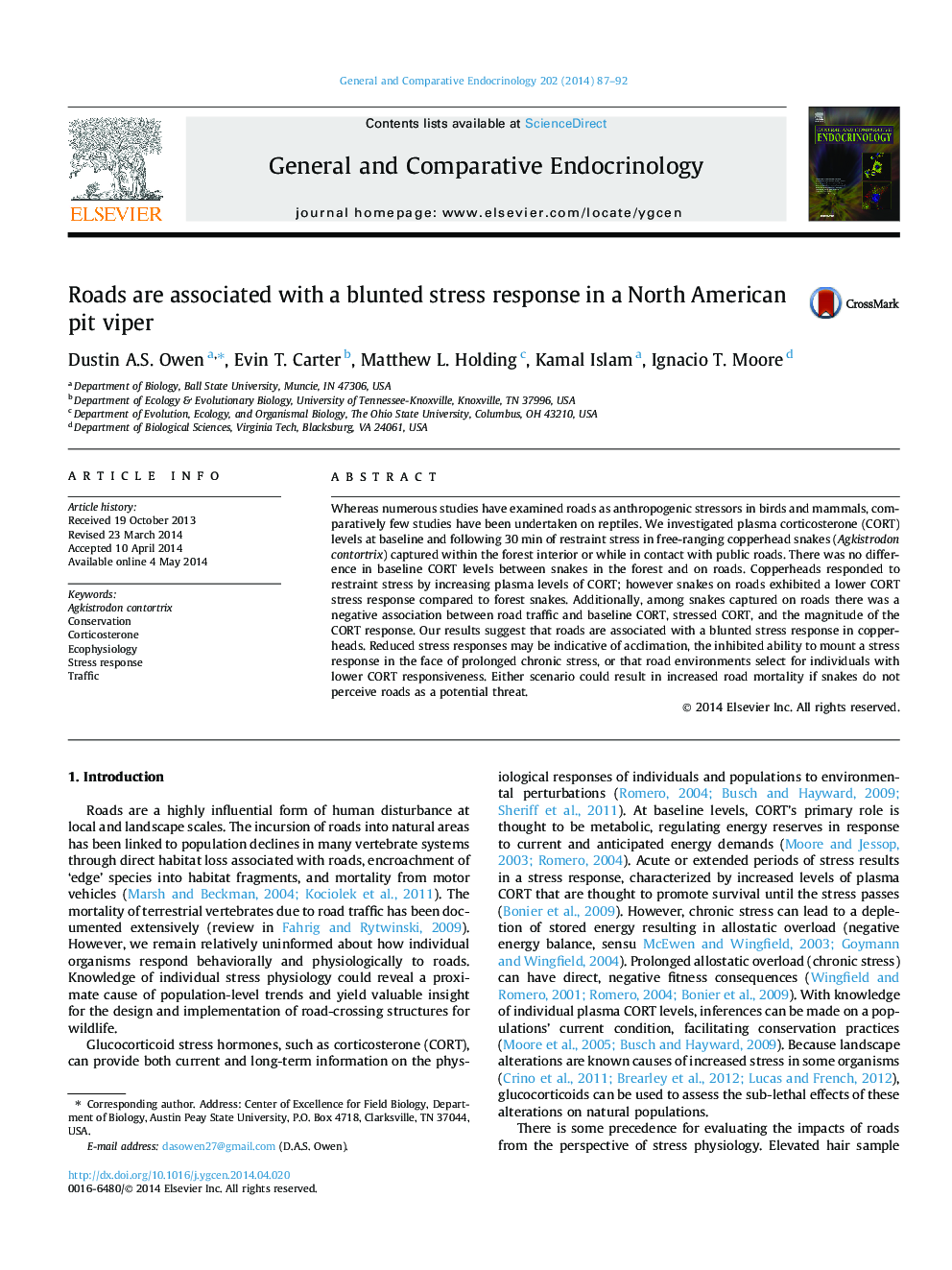| Article ID | Journal | Published Year | Pages | File Type |
|---|---|---|---|---|
| 2800211 | General and Comparative Endocrinology | 2014 | 6 Pages |
•Snakes crossing roads were compared to conspecifics in the forest.•Road snakes had a blunted stress response compared to forest snakes.•Amount of traffic negatively impacted snake stress physiology.•Potential causes are acclimation, chronic stress, or environmental selection.•Provides insight into genetic fragmentation caused by roads on snakes.
Whereas numerous studies have examined roads as anthropogenic stressors in birds and mammals, comparatively few studies have been undertaken on reptiles. We investigated plasma corticosterone (CORT) levels at baseline and following 30 min of restraint stress in free-ranging copperhead snakes (Agkistrodon contortrix) captured within the forest interior or while in contact with public roads. There was no difference in baseline CORT levels between snakes in the forest and on roads. Copperheads responded to restraint stress by increasing plasma levels of CORT; however snakes on roads exhibited a lower CORT stress response compared to forest snakes. Additionally, among snakes captured on roads there was a negative association between road traffic and baseline CORT, stressed CORT, and the magnitude of the CORT response. Our results suggest that roads are associated with a blunted stress response in copperheads. Reduced stress responses may be indicative of acclimation, the inhibited ability to mount a stress response in the face of prolonged chronic stress, or that road environments select for individuals with lower CORT responsiveness. Either scenario could result in increased road mortality if snakes do not perceive roads as a potential threat.
